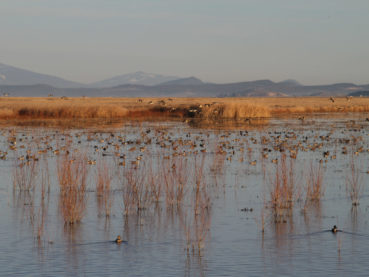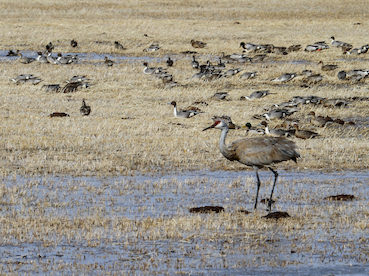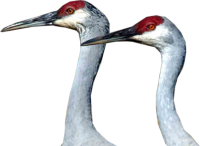The IWJV established the SONEC Working Wet Meadows Initiative (WWMI) to help ranchers continue traditional irrigation management practices that have been used for generations to produce forage, provide wildlife habitat, and sustain ranching communities.





Science and Planning
By identifying new conservation opportunities and funding sources to support conservation of working wet meadows, Water 4 builds partnerships among agricultural and conservation organizations, identifies synergistic opportunities, and expedites and expands conservation delivery. Water 4 strives to develop effective communications to help the agricultural community tell the story of the value of working wet meadows in the Intermountain West and destigmatize flood irrigation practices.
Understanding the perspectives of the landowners is important in balancing the needs of agricultural production and profitability.
In 2017-18, conservation partners in the Intermountain West undertook a human dimensions research project to better understand the relationship between working wet meadows, agricultural production, and bird habitat. The purpose of the project was to learn from landowners about their conservation activities, especially their attitudes regarding flood irrigation and what they consider when making irrigation and other land management decisions. Understanding the perspectives of the landowners is important in balancing the needs of agricultural production and profitability. Read more about this human dimensions research project.
In 2018, important information gaps were filled relative to spatiotemporal dynamics of wetland and irrigated habitats providing data through new SONEC Wetland Dynamic Assessments. In 2019, the IWJV revised waterfowl population goals to update SONEC conservation planning objectives for both fall and spring migration, coordinate planning efforts with partners in the SONEC region, and deliver recently completed wetland evaluations to partners to inform their conservation delivery programs.
Sandhill crane research completed in 2020 began to link bird movements to shifting land use and climatic patterns that influence wetland resiliency. And, to better understand how changing policies intended to increase water use efficiencies may be affecting bird populations, a new white-faced ibis project was completed in 2021.
Conservation Delivery
Seventy-four percent of wet meadows in the SONEC region are on working ranchlands, making private landowners essential to maintaining these critical habitats for numerous wildlife species. The IWJV established the SONEC WWMI to help ranchers continue traditional irrigation management practices that have been used for generations to produce forage, provide wildlife habitat, and sustain ranching communities.
The SONEC WWMI is supported by Oregon NRCS and local partners to deliver private lands wet meadows conservation under the Oregon NRCS Working Lands for Waterbird Habitat Conservation Implementation Strategy, SONEC Regional Conservation Partnership Program (RCPP), and state-based applications of the Environmental Quality Incentives Program and Agricultural Land Easement program. To implement projects across the broad SONEC geography, partners have pooled resources to fund two Farm Bill biologists and a SONEC Conservation Delivery Coordinator. Farm Bill biologists implement NRCS programs in Lake and Harney Counties, and the SONEC Conservation Delivery Coordinator provides oversight for the biologists and assists with wet meadow conservation activities across the region. A multitude of partners including the U.S. Fish and Wildlife Service’s Partners for Fish and Wildlife Program, watershed councils, conservation districts, Ducks Unlimited, California Waterfowl Association, and land trusts are collaborating through this initiative to assist ranchers with improving waterfowl habitat and conserve working lands.
In 2016, the IWJV assisted with securing an additional $2.6 million for working wet meadows conservation. The funding was awarded through the NRCS RCPP for Agricultural Land Easements, Conservation Stewardship Program, and Environmental Quality Incentives Program activities in the SONEC region over a four-year period.
Working ranchlands provide important ecosystem services including clean water, groundwater recharge, and habitat for fish and wildlife. In turn, local communities benefit from the agricultural productivity and recreational opportunities supported by these lands.



